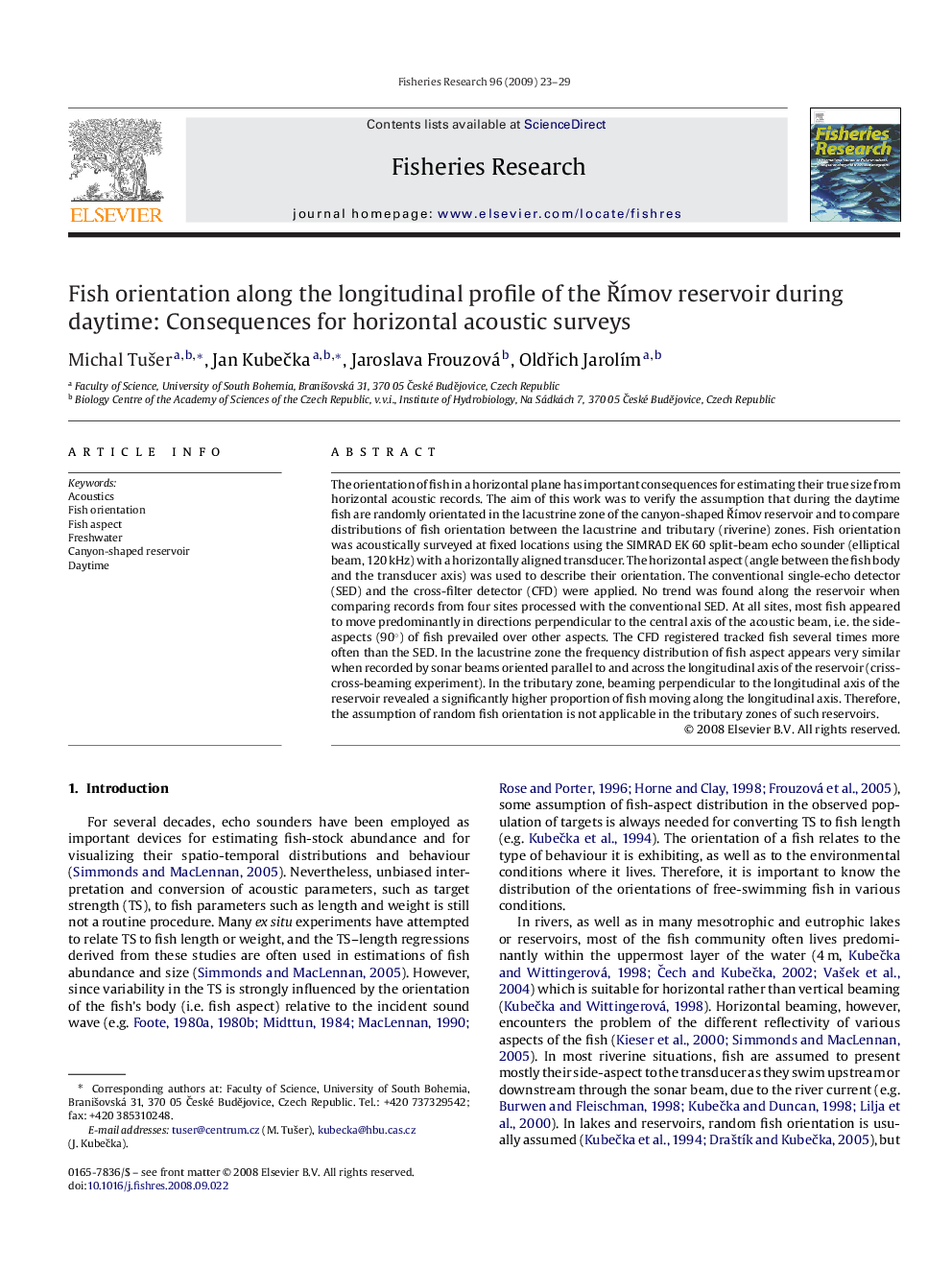| Article ID | Journal | Published Year | Pages | File Type |
|---|---|---|---|---|
| 4544392 | Fisheries Research | 2009 | 7 Pages |
Abstract
The orientation of fish in a horizontal plane has important consequences for estimating their true size from horizontal acoustic records. The aim of this work was to verify the assumption that during the daytime fish are randomly orientated in the lacustrine zone of the canyon-shaped ÅÃmov reservoir and to compare distributions of fish orientation between the lacustrine and tributary (riverine) zones. Fish orientation was acoustically surveyed at fixed locations using the SIMRAD EK 60 split-beam echo sounder (elliptical beam, 120 kHz) with a horizontally aligned transducer. The horizontal aspect (angle between the fish body and the transducer axis) was used to describe their orientation. The conventional single-echo detector (SED) and the cross-filter detector (CFD) were applied. No trend was found along the reservoir when comparing records from four sites processed with the conventional SED. At all sites, most fish appeared to move predominantly in directions perpendicular to the central axis of the acoustic beam, i.e. the side-aspects (90°) of fish prevailed over other aspects. The CFD registered tracked fish several times more often than the SED. In the lacustrine zone the frequency distribution of fish aspect appears very similar when recorded by sonar beams oriented parallel to and across the longitudinal axis of the reservoir (criss-cross-beaming experiment). In the tributary zone, beaming perpendicular to the longitudinal axis of the reservoir revealed a significantly higher proportion of fish moving along the longitudinal axis. Therefore, the assumption of random fish orientation is not applicable in the tributary zones of such reservoirs.
Keywords
Related Topics
Life Sciences
Agricultural and Biological Sciences
Aquatic Science
Authors
Michal TuÅ¡er, Jan KubeÄka, Jaroslava Frouzová, OldÅich JarolÃm,
